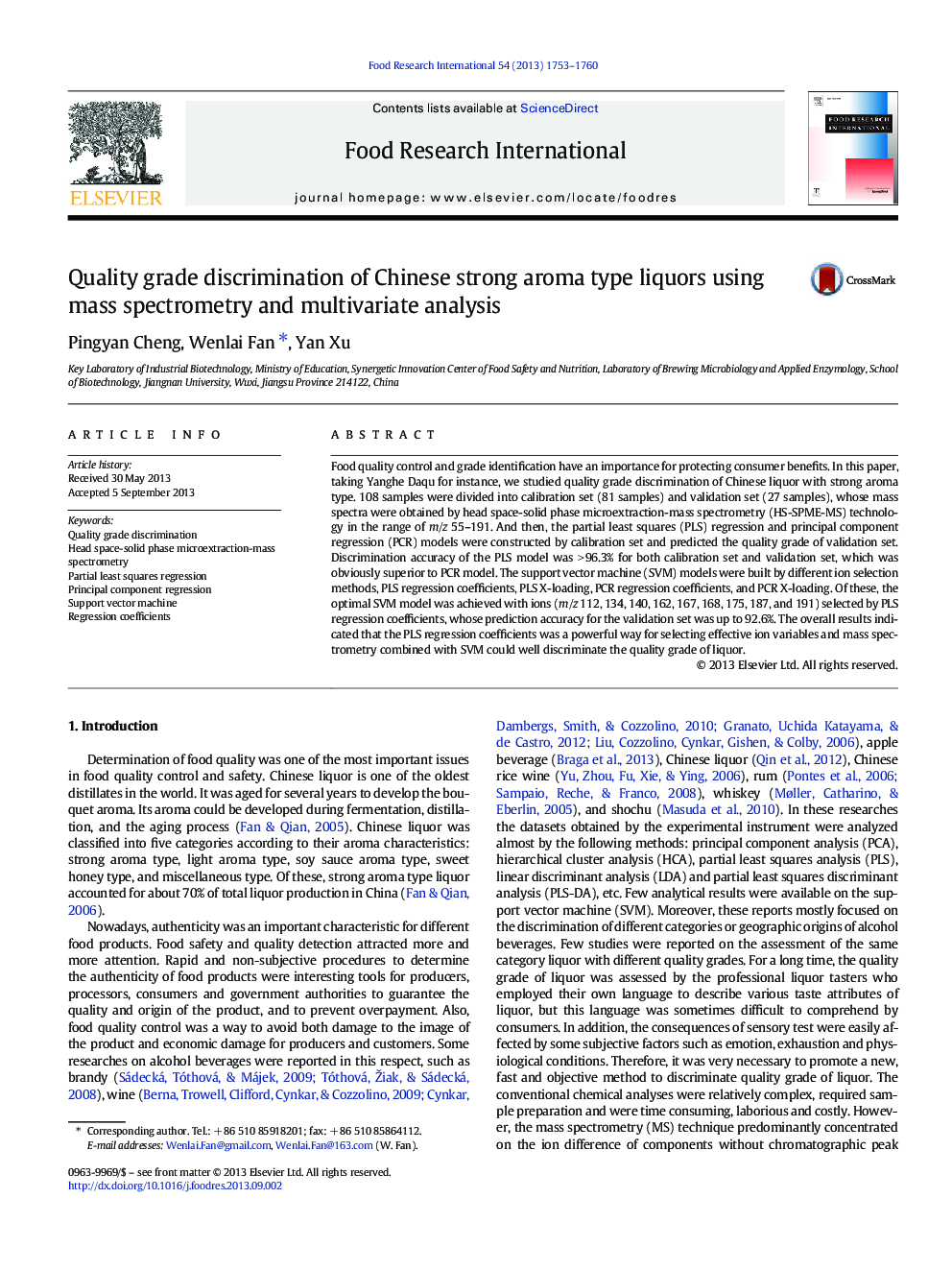| Article ID | Journal | Published Year | Pages | File Type |
|---|---|---|---|---|
| 6397423 | Food Research International | 2013 | 8 Pages |
â¢Discrimination of quality grade is important for controlling liquor quality.â¢The HS-SPME-MS technique can quickly collect the ion information of compounds.â¢The prediction ability of PLS model is superior to PCR model.â¢PLS regression coefficient was a powerful way for selecting effective ion variables.â¢Mass spectrometry combined with SVM could well discriminate quality grade of liquor.
Food quality control and grade identification have an importance for protecting consumer benefits. In this paper, taking Yanghe Daqu for instance, we studied quality grade discrimination of Chinese liquor with strong aroma type. 108 samples were divided into calibration set (81 samples) and validation set (27 samples), whose mass spectra were obtained by head space-solid phase microextraction-mass spectrometry (HS-SPME-MS) technology in the range of m/z 55-191. And then, the partial least squares (PLS) regression and principal component regression (PCR) models were constructed by calibration set and predicted the quality grade of validation set. Discrimination accuracy of the PLS model was >Â 96.3% for both calibration set and validation set, which was obviously superior to PCR model. The support vector machine (SVM) models were built by different ion selection methods, PLS regression coefficients, PLS X-loading, PCR regression coefficients, and PCR X-loading. Of these, the optimal SVM model was achieved with ions (m/z 112, 134, 140, 162, 167, 168, 175, 187, and 191) selected by PLS regression coefficients, whose prediction accuracy for the validation set was up to 92.6%. The overall results indicated that the PLS regression coefficients was a powerful way for selecting effective ion variables and mass spectrometry combined with SVM could well discriminate the quality grade of liquor.
